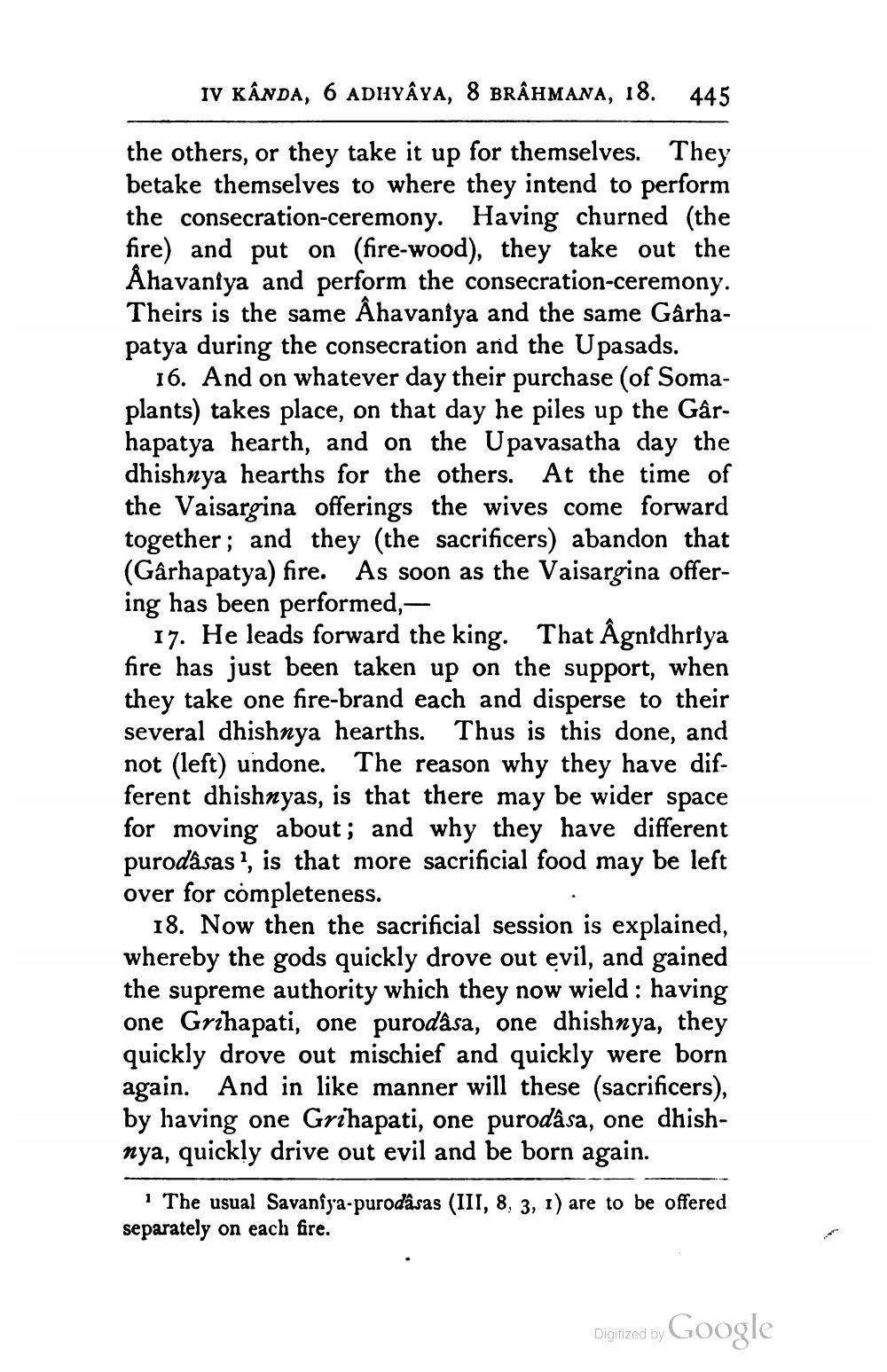________________
IV KÂNDA, 6 ADHYAYA, 8 BRÂHMANA, 18.
445
the others, or they take it up for themselves. They betake themselves to where they intend to perform the consecration-ceremony. Having churned (the fire) and put on (fire-wood), they take out the Åhavaniya and perform the consecration-ceremony. Theirs is the same Åhavaniya and the same Gârhapatya during the consecration and the Upasads.
16. And on whatever day their purchase (of Somaplants) takes place, on that day he piles up the Gârhapatya hearth, and on the Upavasatha day the dhishnya hearths for the others. At the time of the Vaisargina offerings the wives come forward together; and they (the sacrificers) abandon that (Gârhapatya) fire. As soon as the Vaisargina offering has been performed, -
17. He leads forward the king. That Âgnidhriya fire has just been taken up on the support, when they take one fire-brand each and disperse to their several dhishnya hearths. Thus is this done, and not (left) undone. The reason why they have different dhishnyas, is that there may be wider space for moving about; and why they have different purodåsas !, is that more sacrificial food may be left over for completeness.
18. Now then the sacrificial session is explained, whereby the gods quickly drove out evil, and gained the supreme authority which they now wield: having one Grihapati, one purodása, one dhishnya, they quickly drove out mischief and quickly were born again. And in like manner will these (sacrificers), by having one Grihapati, one purodása, one dhishnya, quickly drive out evil and be born again.
· The usual Savanîya-purodāsas (III, 8, 3, 1) are to be offered separately on each fire.
Digitized by Google




